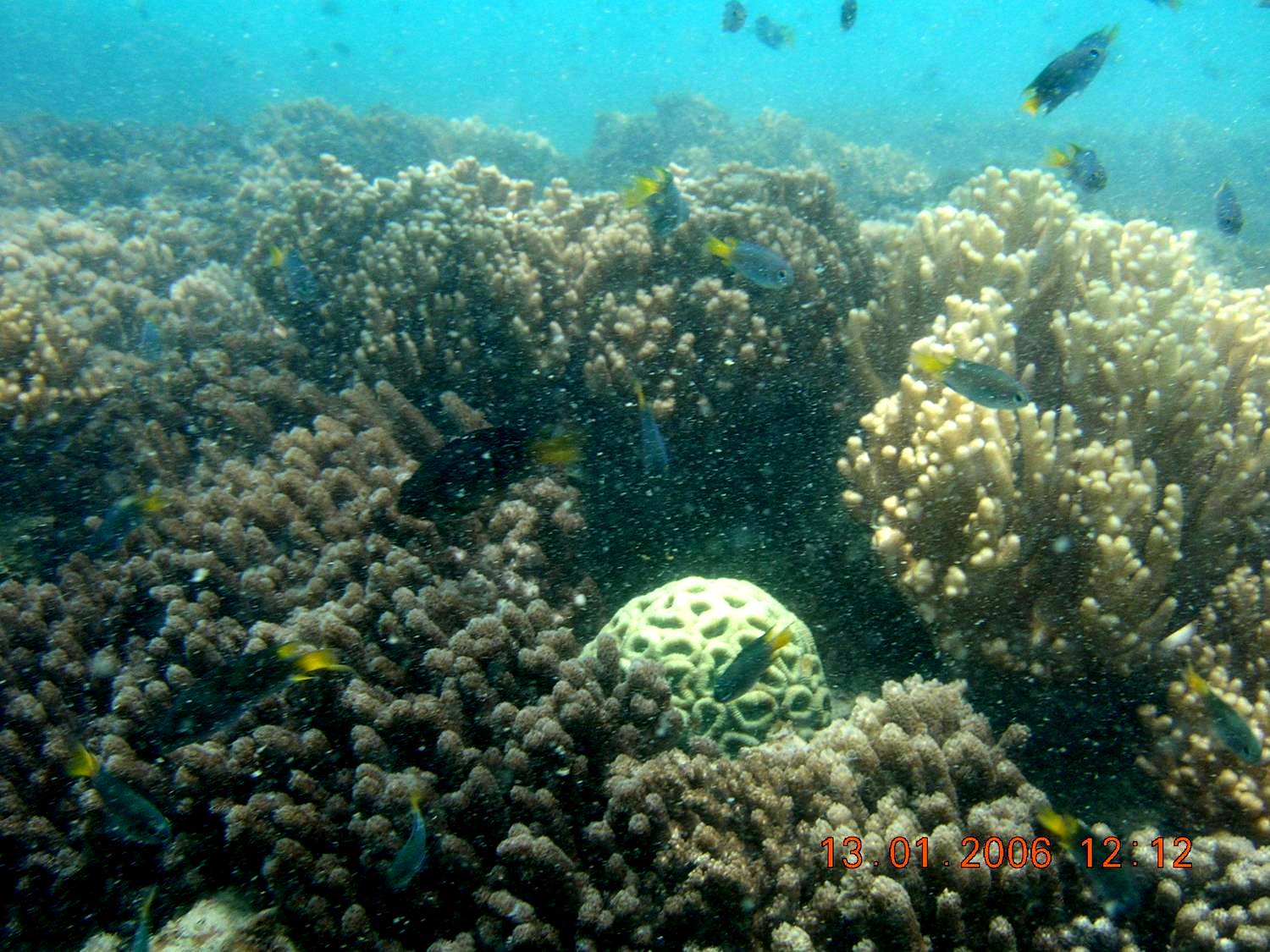|
|
Soft corals and other octocorallians on consolidated substrateShort descriptionSubtidal soft corals and other octocorallians on consolidated substrate in shallow to deep water. Disclaimer: Ecosystem type descriptions are based on biophysical attributes identified in Central Queensland through expert advice and supported by scientific literature. Not all ecosystem types are mapped based on current inventory, and many of the ecosystems described here may also occur in other parts of Queensland.
Classification categoriesSelect from the links below to view related ecosystem type categories Long descriptionSubtidal soft corals and other octocorallians on consolidated substrate in shallow (less than 10 metres) to deep (10 to 30 metres depth) water. Consolidated substrate includes terrigenous (land origin) rocky subtidal platforms and carbonate substrates. Octocorallia is a subclass of the class Anthozoa in the phylum Cnidaria, and include soft corals, gorgonians, sea whips, sea pens, sea fans and octocorals. Like some of the many other anthozoans, octocorallians are sessile polyp-bearing animals with a mobile larval phase. Octocorallians are distinguished by the eight (i.e. octo) tentacles in each polyp. Most octocorallians do not deposit a rigid calcium carbonate exoskeleton, and therefore tend to attach to reefs rather than contribute to reefal frameworks as per the reef building Scleractinian (hard) corals[1]. Biota includes Alcyonarian soft corals (e.g. Cladiella, Klyxum, Sinularia, Lobophytum, Sarcophyton and Dendronephthya spp.) and other octocorallians, with subdominant other taxa include sponges, zoanthids, ascidians, hydroids. Some soft corals possess endosymbiotic dinoflagellates (e.g. zooxanthellae) which are capable of photosynthesis. These corals will often be found in shallower water (e.g. families Nephtheidae, Alcyoniidae and Xeniidae), while others only capture plankton from the water column (i.e. are heterotrophic) and are mostly found in areas of high current energy (e.g. Dendronephthya spp. and sea fans or sea whips). Both soft and hard corals occur on the Great Barrier Reef. There is a gradient in species diversity from north to south and across the continental shelf where midshelf reefs are more diverse than either offshore or inshore reefs. Some soft corals are pioneering species that colonise rapidly, while others are slow growing and slow colonising and are slow to return after a disturbance (Fabricius, AIMS). Special valuesSoft corals are colourful and are an attraction for divers, snorkellers and other tourists. Soft corals and other octocorallians on consolidated substrates provide food and shelter for a few species of butterfly fish and for a diversity of symbiotic animals (e.g. nudibranchs, egg cowries, brittle stars, feather stars, shrimps, ctenophores and fish). Soft corals can provide three-dimensional shelter for a variety of other fish species. Some species are long lived and slow growing, including large sea fans and Sinularia spp. colonies. Diagnostic attributesInundation 'Subtidal' Consolidation 'Consolidated' Structural macrobiota 'Soft corals – octocorallians' Benthic depth 'Shallow (0-10m)', 'Deep (10-30m)' Qualifiers
DistributionMay occur on consolidated substrates (see type 100 and 101) and boulders (see type 108) (adjacent to rocky reefs and coral reefs). The following relates to distribution of this ecosystem type within the Central Queensland mapping area:
CommentsRelevant other attributes are Energy magnitude and Energy source (wave) as soft coral colonies can be dislodged or damaged during storms or cyclones. Energy source (current) as heterotrophic octocorallians need current flow to capture planktonic food. Water temperature as soft corals are vulnerable to warm water bleaching events. Poor Water clarity can reduce photosynthesis and sedimentation (muddy Sediment texture) can smother colonies and prevent larval settlement. Additional InformationSoft corals of the Great Barrier Reef - eAtlas Classification - corals of the world References
Last updated: 22 July 2019 This page should be cited as: Department of Environment, Science and Innovation, Queensland (2019) Soft corals and other octocorallians on consolidated substrate, WetlandInfo website, accessed 25 June 2024. Available at: https://wetlandinfo.des.qld.gov.au/wetlands/ecology/aquatic-ecosystems-natural/estuarine-marine/descriptions/99/ |

 — Department of Environment, Science and Innovation
— Department of Environment, Science and Innovation


